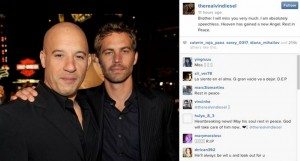 When the actor Paul Walker died in a car crash, the Associated Press reported a touching tribute from his Fast and Furious co-star, Vin Diesel. “Brother I will miss you very much,” said therealvindiesel’s message on Instagram. “Heaven has gained a new Angel.” The quote drew more than 200,000 likes and one big thumbs down–for being a fake. The AP had to correct its story.
When the actor Paul Walker died in a car crash, the Associated Press reported a touching tribute from his Fast and Furious co-star, Vin Diesel. “Brother I will miss you very much,” said therealvindiesel’s message on Instagram. “Heaven has gained a new Angel.” The quote drew more than 200,000 likes and one big thumbs down–for being a fake. The AP had to correct its story.
It was just the latest example of a news organization passing on erroneous information that it found on social media. As we’ve previously reported, many of the mistakes have happened while covering breaking news. But this latest goof suggests the pressure to be first has become so pervasive that even basic steps aren’t being taken to verify social media information before posting, publishing or broadcasting it.
What steps? Here’s what senior producer Kim Bui of public radio station KPCC in California recommends.
It also helps to be prepared to use social media when big news breaks. Bui’s station developed a list of Twitter users to follow in breaking news situations and pulls it up as needed. Where to begin to develop your own list? By checking out the competition, of course.
Every newsroom needs a breaking news social media strategy, Bui says. Decide who will curate and who will live-Tweet as the story develops. Bui also recommends that newsrooms search for hashtags already in use before developing one of their own for an ongoing story. Her station’s feed got lots of traffic during the summer’s wildfires in Southern California by adopting the hashtag the Los Angeles Fire Department was already using.
“Social media is a dinner party,” Bui says. “You want to be a good party guest. Facilitate conversations, add context and depth, say thank you to users who give you a tip or correct information, and don’t talk about yourself too much.”









1 Comment
[…] If you are interested in reading the story, just click here. […]